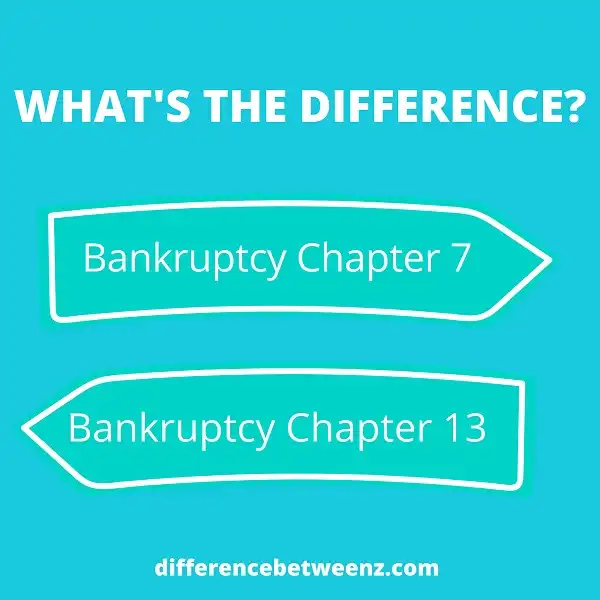When you are struggling with debt, you may be considering filing for bankruptcy. There are two types of bankruptcies available to individuals: Chapter 7 and Chapter 13. Both have their pros and cons, so it is important to understand the difference between them before making a decision. In this blog post, we will discuss the key differences between Chapter 7 and Chapter 13 bankruptcies. We will also help you decide which type of bankruptcy is right for you. So, if you are struggling with debt, keep reading!
What is Bankruptcy Chapter 7?
Bankruptcy Chapter 7 is a process that helps individuals and businesses eliminate their debts. The process is overseen by a bankruptcy court and can be initiated by the debtor or their creditors. When a debtor files for Chapter 7 bankruptcy, they are required to surrender all of their nonexempt assets to the court. These assets are then used to pay off the debtor’s debts. Once the debts have been paid, the debtor is discharged from their obligations and can start fresh. Bankruptcy Chapter 7 can be an effective way to eliminate debt and give oneself a fresh start. However, it is important to note that filing for bankruptcy will have a negative impact on one’s credit score.
What is Bankruptcy Chapter 13?
Bankruptcy Chapter 13 is a reorganization bankruptcy. It allows debtors to repay all or part of their debts over a period of time, usually three to five years. Under this chapter, a debtor proposes a repayment plan to the court and makes payments to a trustee who distributes the payments to creditors. Creditors are prohibited from taking any action to collect the debt during the repayment period.
At the end of the repayment period, any unpaid balance of the debt is discharged. Bankruptcy Chapter 13 offers certain advantages over other types of bankruptcies, such as the ability to catch up on missed mortgage payments and protect certain property from repossession. However, it also has some disadvantages, such as the need to make regular payments for an extended period of time and the possibility that some debts may not be discharged at the end of the repayment period.
Difference between Bankruptcy Chapter 7 and 13
Bankruptcy is a legal process that provides debt relief to individuals and businesses. There are two main types of bankruptcy: Chapter 7 and Chapter 13. Chapter 7 bankruptcy is also known as liquidation bankruptcy. It involves the sale of non-exempt assets in order to pay creditors. Chapter 13 bankruptcy is also known as a reorganization bankruptcy. It involves the repayment of debts over a three- to five-year period. Each type of bankruptcy has its own requirements and benefits. individuals who are considering filing for bankruptcy should consult with an experienced attorney to determine which type of bankruptcy is right for them.
Conclusion
The main difference between Chapter 7 and Chapter 13 bankruptcy is the type of debt that is forgiven. In Chapter 7, most unsecured debts are discharged, meaning you no longer have to pay them back. However, in a Chapter 13 bankruptcy, your debts are restructured so you can afford to repay them over time.
Which type of bankruptcy is right for you depends on your unique financial situation. If you’re not sure which option is best for you, it’s best to speak with an experienced bankruptcy attorney who can help guide you through the process.


